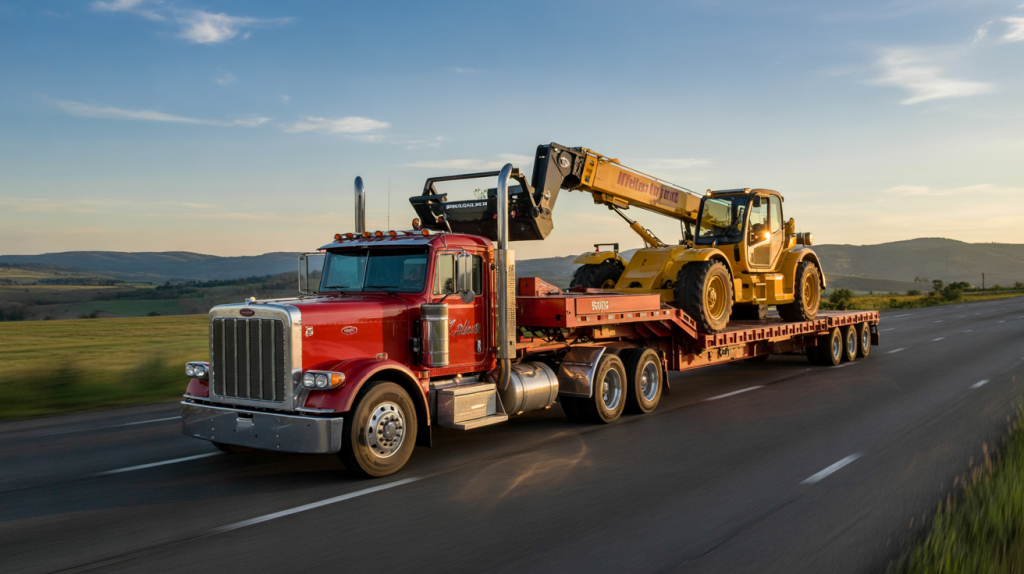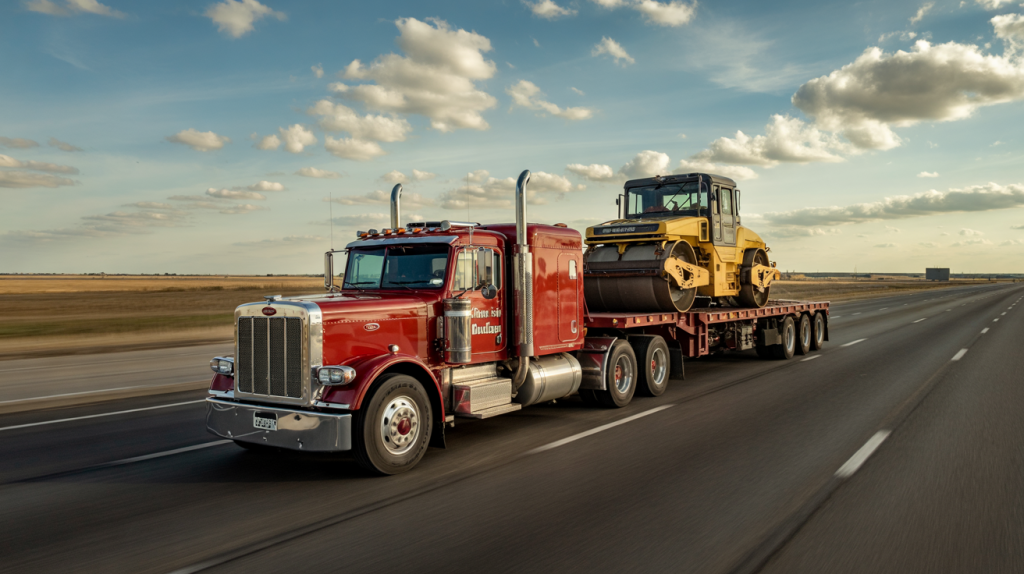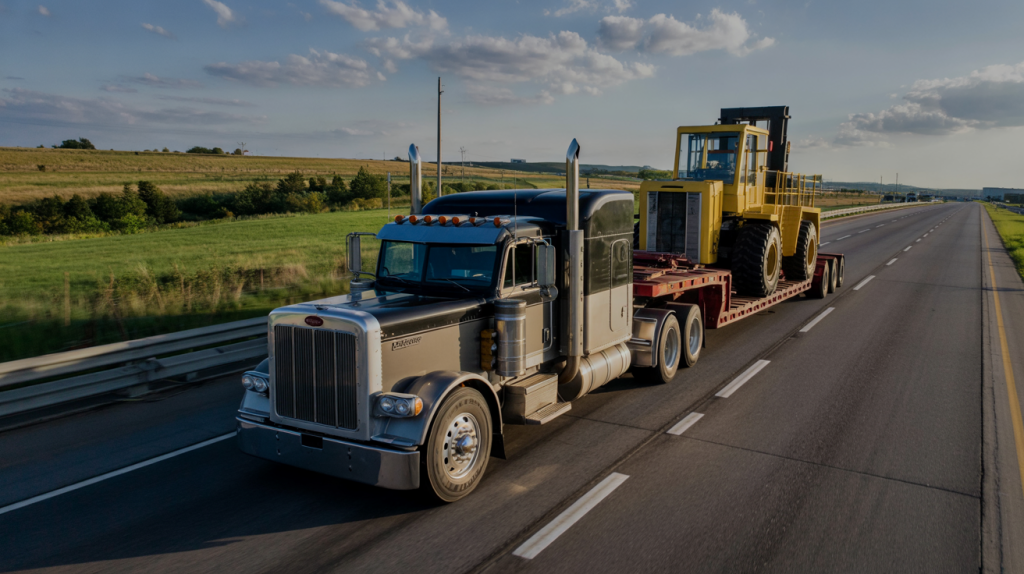How We Handle Heavy Haul Challenges in Minnesota – Here’s How We Manage and Avoid Them
Freedom Heavy Haul can offer expedited Pickup and Delivery for any size shipment anywhere in the USA. Contact us today for No Hassle, No Pressure Pricing.
Transporting oversized or overweight freight through Minnesota isn’t easy. From seasonal road restrictions to complex permits and tight infrastructure, there are many issues that can slow down your shipment or increase costs. This is how we handle each challenge to ensure your heavy haul freight reaches its destination safely, legally, and without unnecessary delays.
In this article, you will learn about How We Handle Heavy Haul Challenges in Minnesota.
Regulatory and Permitting Challenges
If your load goes beyond legal limits in height, width, length, or weight, it requires special permits from the Minnesota Department of Transportation (MnDOT) and possibly from local cities or counties too.
How We Handle Permitting Requirements
- We secure all required state and local permits before the truck moves.
- Our team is familiar with Minnesota’s layered regulatory structure, so we know exactly where and when to apply.
- We track renewal dates and ensure every permit is valid for your shipment’s route and schedule.
This saves you from legal issues, fines, or being stopped mid-route.
Seasonal Weather and Road Restrictions
Minnesota’s winters and spring thaw season introduce major logistical risks. Ice, snow, and frost laws can make some roads temporarily inaccessible for heavy haul freight.
How We Avoid Seasonal Delays
- We monitor MnDOT’s 511 system for real-time updates on road conditions and closures.
- During spring, we plan around frost law restrictions that reduce weight limits on certain roads.
- We use cold-weather-rated equipment and schedule moves during safer weather windows.
Planning ahead means your shipment stays on schedule—even when Minnesota’s weather doesn’t cooperate.
Road and Bridge Limitations Across the State
Not all roads or bridges in Minnesota can support heavy haul cargo. This becomes even more critical when your shipment is heading to rural destinations or industrial zones with limited access routes.

How We Plan Routes Around Infrastructure Limitations
- We conduct detailed route surveys using advanced GPS and mapping tools.
- Our team identifies bridge weight ratings, road widths, and clearance heights in advance.
- We design detour-ready plans that avoid risky turns, low clearances, or restricted roads.
With this approach, we keep your freight moving without last-minute changes or unsafe routes.
Route Planning Complexity
Oversized shipments don’t follow standard truck routes. Every mile needs to be carefully planned to avoid obstacles, traffic, and delays.

How We Build Smarter Routes for Heavy Haul Loads
- We integrate live traffic, roadwork data, and weather conditions into our route planning tools.
- Our logistics team avoids construction zones, peak-hour congestion, and time-restricted areas.
- We create custom maps that prioritize safety, speed, and permit compliance.
This detailed planning helps prevent delays, mechanical issues, or unnecessary wear on equipment.
Safety Standards and Legal Compliance
Oversize loads require more than just a truck—they demand strict safety compliance. Mistakes here can be dangerous for everyone on the road.

How We Ensure Safety at Every Step
- We follow Minnesota’s rules for pilot cars, signage, lighting, and driver certifications.
- Our drivers and support staff are trained and experienced in heavy haul compliance.
- We carry out safety inspections before and during every haul.
You can trust that your freight is being transported under the highest safety protocols.
Load Securement and Trailer Matching
Keeping your freight secure during transit is critical. A shifting load can cause damage, delay, or even lead to an accident.
How We Protect Your Freight in Transit
- We match trailers and securement tools based on the exact specifications of your cargo.
- We use chains, binders, cradles, and blocking systems as needed.
- Our team inspects and reinforces load securement multiple times during the trip.
We treat your equipment like it’s our own—secure, stable, and protected from start to finish.
Coordinating With All Stakeholders
Heavy haul shipments require coordination between more than just the driver and customer. Police escorts, permit offices, site crews, and other stakeholders are often involved.
How We Keep Everyone on the Same Page
- We use centralized communication tools to share updates across all parties involved.
- Our dispatch system provides real-time GPS tracking, status notifications, and mobile alerts.
- We keep you fully informed throughout the move, from pickup to delivery.
You never feel in the dark about your freight’s location or status.
Managing Costs in Specialized Trucking
Heavy haul isn’t cheap, but that doesn’t mean your shipping budget should be unpredictable or uncontrolled.
How We Help You Control Costs
- We plan efficient return trips to reduce empty hauls.
- We optimize routes to reduce fuel use and wear on vehicles.
- Our team provides accurate pricing and upfront quotes, so you don’t get surprise bills.
Smart logistics and clear communication are how we protect your bottom line.
Your Freight, Handled with Precision
Heavy haul trucking in Minnesota is full of moving parts—but we’ve built systems to manage every single one of them. From legal compliance and secure loading to weather planning and route optimization, our team delivers peace of mind along with your shipment.
When your equipment matters, choose a team that takes every challenge seriously—so you don’t have to.
Frequently Asked Questions about How We Handle Heavy Haul Challenges in Minnesota
What size or weight needs a heavy haul permit in Minnesota?
Loads over 13 feet 6 inches high, 8 feet 6 inches wide, or weighing more than 80,000 lbs typically require permits. Exact limits can vary by axle count and route.
Can you transport heavy freight during winter in Minnesota?
Yes, but it must be done carefully. We monitor road conditions and use cold-rated gear to avoid delays or damage during snow and ice conditions.
What is the frost law season in Minnesota?
Frost laws usually start in March and last into early May. During this period, axle weight limits are reduced to prevent road damage from thawing pavement.
Do all heavy hauls need pilot cars?
Not all, but many do. Whether a pilot car is needed depends on the size of the load and the route. We include this in the planning and permitting process.
Can you help plan a route for my oversized load?
Yes. We provide full-service route planning, permit handling, load securement, and coordination for all shipments. Every shipment we handle gets a custom route tailored for safety, legality, and efficiency.
Let me know if you’d like this article turned into a downloadable PDF, WordPress post, or a version optimized for email outreach.







